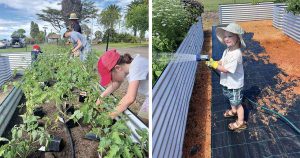Quite frequently overlooked by many people who venture into local bushland are those plants growing close to the ground and in sheltered, damp locations, often concealed close to rocky places not far from permanent sources of water.
Many such terrestrial plants are classified under the broad heading of “Ferns”. The ground hugging varieties generally present with a deep, lush green colour with soft, delicate and often lacy foliage, clumped together in colonies. All are reasonably common in or around the environment described.
In Australia, around 400 species have been identified, with about 120 being found in the greater Sydney area. Referring to the photographs accompanying this week’s column will assist in identifying some exquisite ferns found growing in our local bushland reserves.
The overall size of each fern may be gauged by comparing the sizes of adjacent leaves on the ground nearby, which may range from about 50 mm to 150 mm in length.
These plants have been thriving in their favoured habitat long before flowering plants existed. They not only require moisture to grow and thrive, but also require reliable moisture in order to reproduce.
Reproduction for many ferns is by means of spores which can be found stuck to the underside of fronds.
Released spore material requires constantly moist conditions in which to successfully germinate.
Although the immature fern requires some light, protection from direct sunlight is also an important factor as the juvenile fern grows to maturity.
There are other ferns which multiply by forming spreading rhizomes (roots) which lay just below the surface of decomposing leaf litter.
Another fern which can become a pest if not controlled, is the Bracken Fern (Pteridium esculentum). This is a widespread perennial found in open forests and woodland fringes. It has the tendency to severely compete with other plants on the forest floor thus preventing their germination.









